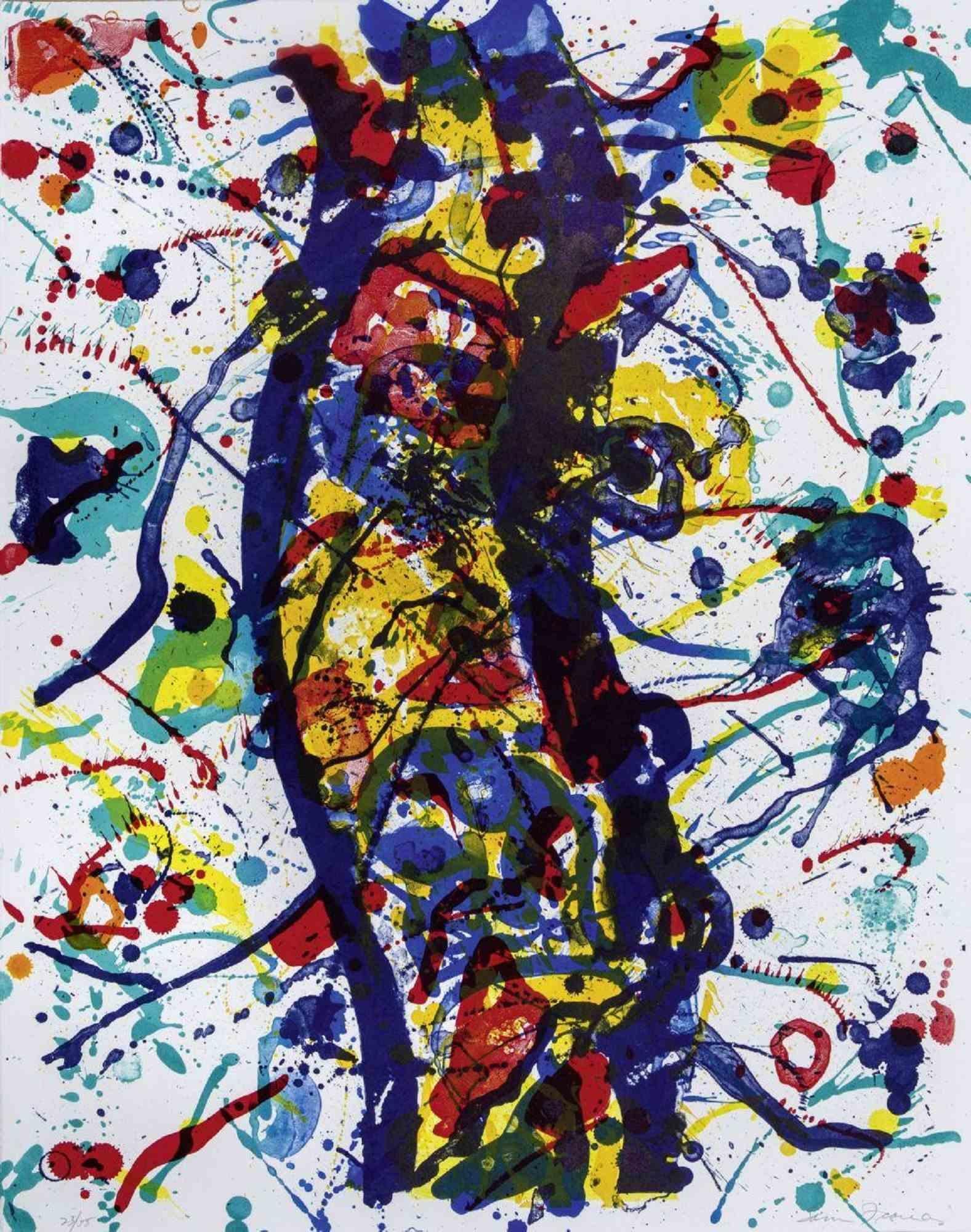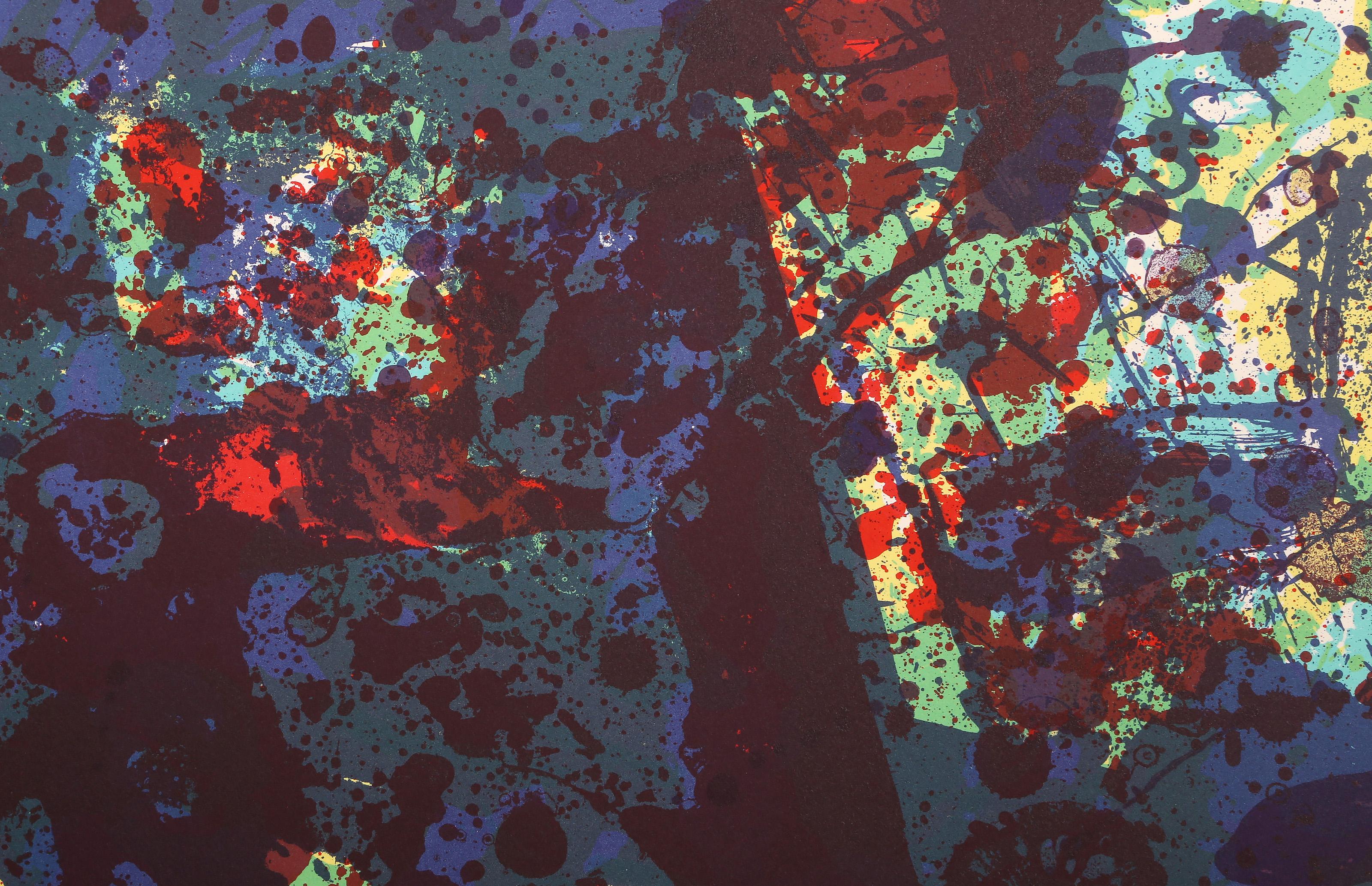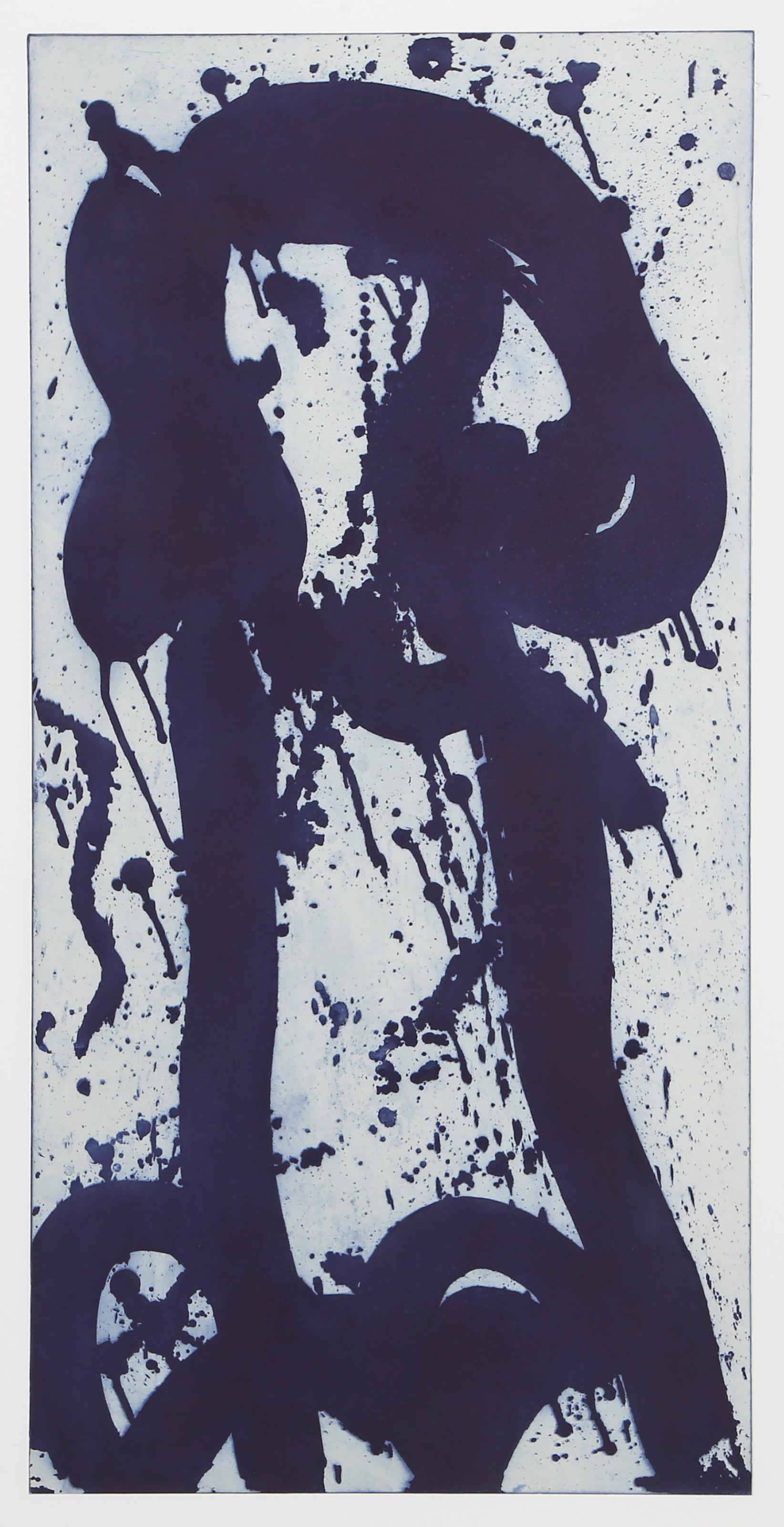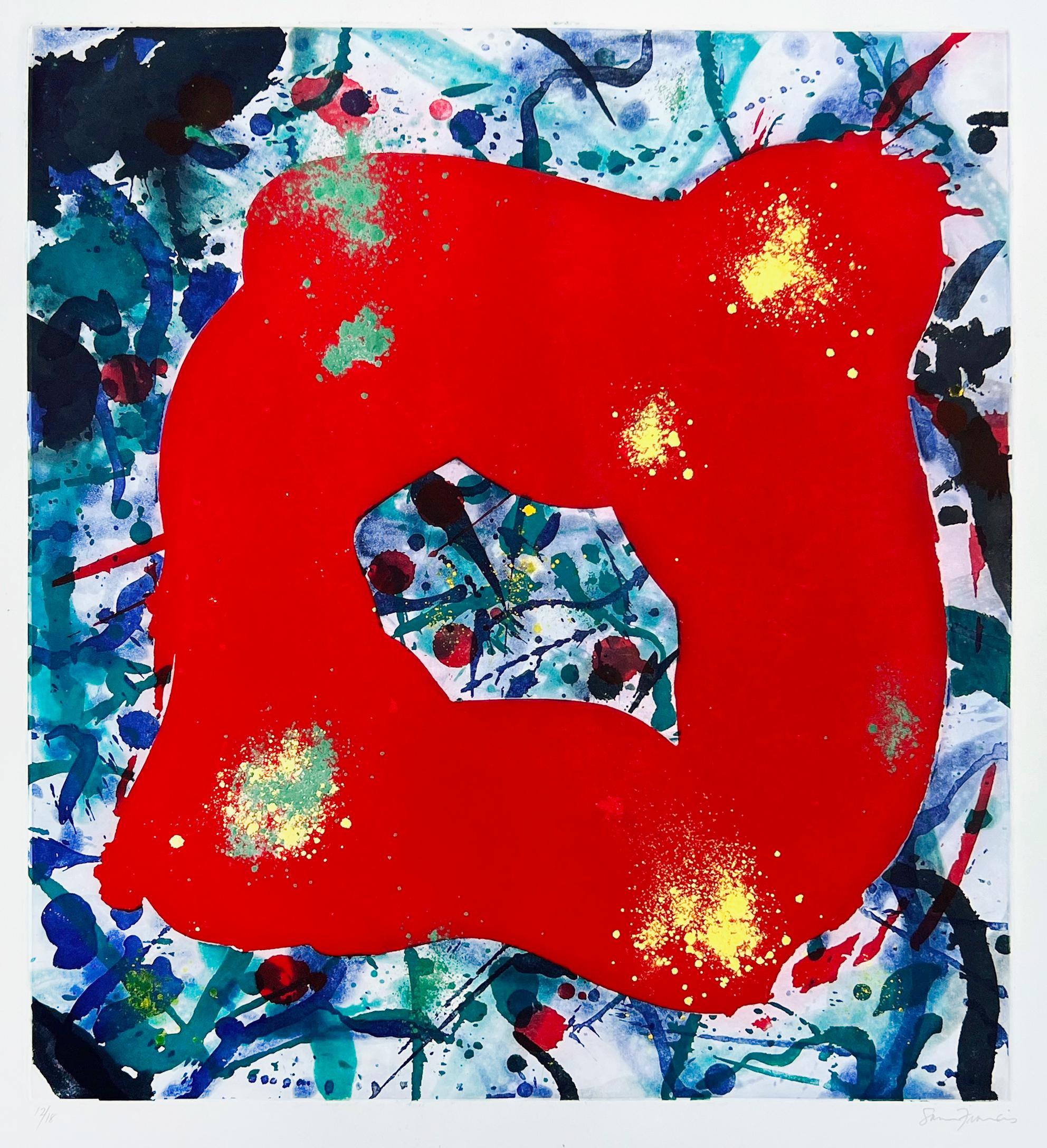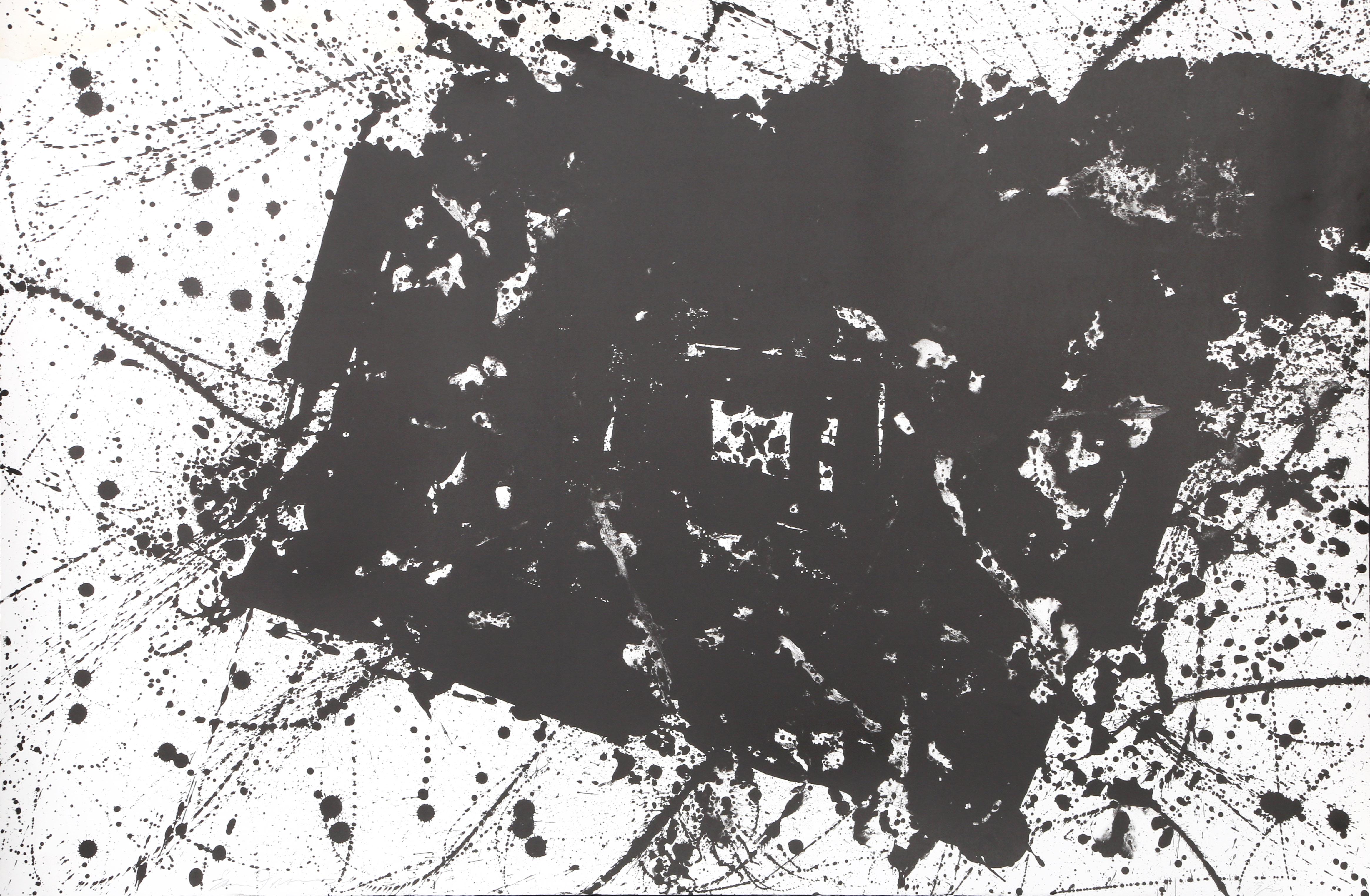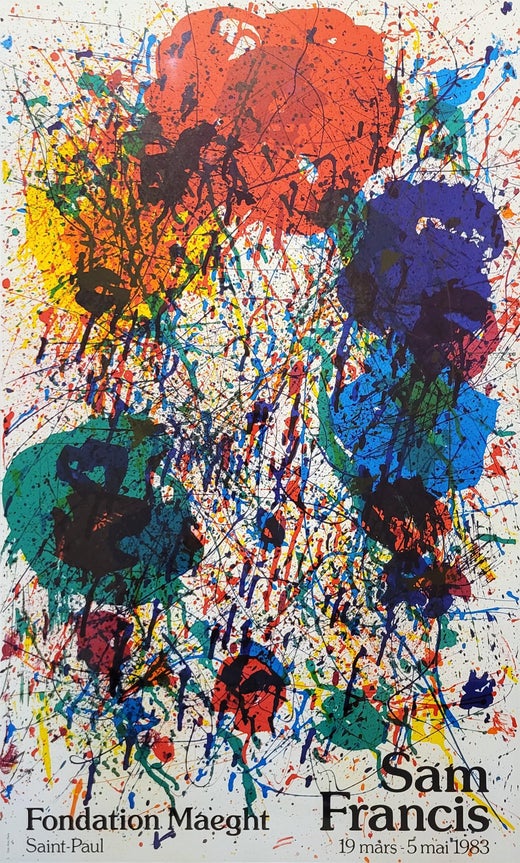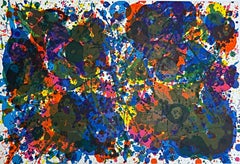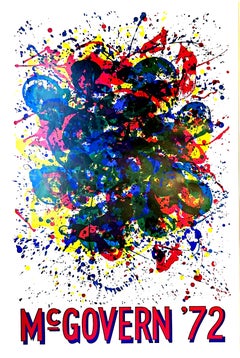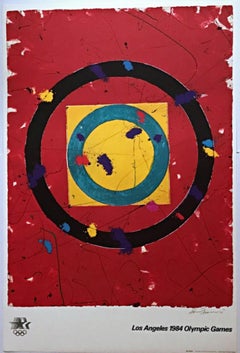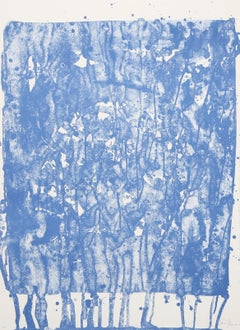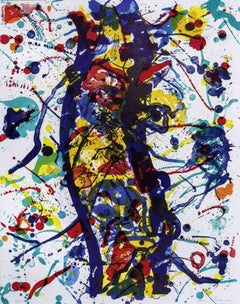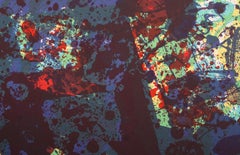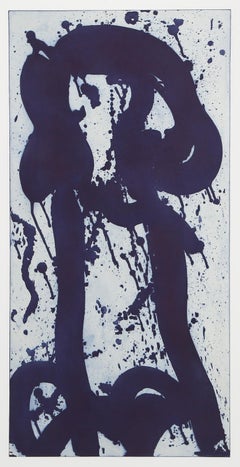SAM FRANCIS
Affiche Moderna Museet Stockholm (Catalogue Raisonne Lembark-16, p.66), 1960
Color lithograph on Rives BFK Paper with deckled edges
Pencil signed lower right of center; numbered 37/75 lower left of center
Published by Kornfeld and Klipstein, Bern; printed by Emil Matthieu at Emil Matthieu Atelier, Zurich
(Catalogue Raisonne L-16, p.66)
37 1/4 × 27 inches
Provenance: Estate of Wolf Kahn and Emily Mason
Unframed
Editions of this iconic Sam Francis work have been exhibited in museums throughout the world over the past half center; many remain in the permanent collection of major museum and institutions .
In addition to this pencil signed and numbered lithograph, there was, separately a poster edition of 500 (unsigned) published by Moderna Museet featuring the same image on different paper.
About Sam Francis
B. 1923, SAN MATEO, CALIFORNIA; D. 1994, SANTA MONICA, CALIFORNIA
Samuel Lewis Francis was born on June 25, 1923, in San Mateo, California. He began painting in 1944 after being diagnosed with spinal tuberculosis, resulting from a U.S. Army Air Corps accident. In 1947 he studied privately with painter David Park, and soon gave up his intended medical studies, earning a BA in 1949 and an MA in 1950 at the University of California, Berkeley.
He experimented with the dominant and emerging styles of the late 1940s, particularly Abstract Expressionism and Surrealism, eventually developing a personal style of abstraction focused on dripping, cell-like forms, an allover instability, and sensitivity to color and light, as in Opposites (1950). In 1950 Francis moved to Paris and attended the Atelier Fernand Léger, where he was exposed to the work of Pierre Bonnard and Henri Matisse, which reinvigorated his interest in light and vibrant color, visible in his 1953 painting Big Red. Producing such work led to his association with Art Informel, although Francis never fully associated with any movement. A visit to Japan in 1957 coincided with an opening up of expanses of white space in much of his work, and his subsequent move to a larger studio in Paris resulted in the production of large-scale paintings and mural commissions, including a 1959 painting for the Chase Manhattan Bank, New York.
Francis returned to California in 1962 and resumed painting with combinations of bright colors. Clement Greenberg's landmark exhibition Post Painterly Abstraction (1964) at the Los Angeles County Museum of Art, which focused on paintings emphasizing color over gesture, included works by Francis. In the late 1960s, however, color increasingly vanished from his canvases. In 1973 he formed a lithography production company, which published his own prints. Over the next decades, Francis's style in painting and print production evolved from the depiction of bright, centrally placed shapes evocative of Tibetan mandalas (influenced by Jungian psychology) to his late-1970s exploration of more severe grid structures to a 1980s fascination with snakelike forms and colorful drips. His final decades of artistic production paralleled a succession of publishing, nonprofit, and visionary enterprises: in addition to his lithography studio, Francis formed a wind harvesting and alternative energy company in 1975; helped organize the Museum of Contemporary Art, Los Angeles, in 1980; formed the Lapis Press, which focused on eclectic scholarship, in 1984; created a naturopathy-based medical research center in 1987; and founded the Sam Francis Art Museum in 1990 to perpetuate his artistic legacy and support charitable donations.
Galerie Nina Dausset, Paris, gave Francis his first solo exhibition in 1952, and he has been the subject of dozens more at institutions that include the Pasadena Art Museum (1959); Museum of Fine Arts, Houston (1967); Centre national d'art contemporain, Fondation Rothschild, Paris (1968); Whitney Museum of American Art, New York (1972); Institute of Contemporary Art, Boston (1979); and Museum of Modern Art, Toyama, Japan (1988). He was included in 12 Americans at the Museum of Modern Art, New York (1956), and in Documenta, Kassel, West Germany (1964). In the last year of his life, Francis, suffering from cancer and unable to use his right hand because of a fall, painted 150 small works with his left hand. Francis died on November 4, 1994, in Santa Monica, California.
-Courtesy Guggenheim Museum
More about Sam Francis:
For Sam Francis, exploring the creative process was his driving force. It impacted not only his art, but his view of human progress.
One of the twentieth century’s most profound Abstract Expressionists, American artist Sam Francis (1923-1994) is noted as one of the first post-World War II painters to develop an international reputation. Francis created thousands of paintings as well as works on paper, prints and monotypes, housed in major museum collections and institutions around the world. Regarded as one of the leading interpreters of color and light, his work holds references to New York abstract expressionism, color field painting, Chinese and Japanese art, French impressionism and his own Bay Area roots.
After graduating from Cal Berkeley in 1950 with a degree in art, Francis moved to Paris, where he would go on to be named by Time Magazine as, “the hottest American painter in Paris these days.” A transformative period of his career, Francis immersed himself in a study of Monet’s Water Lilies and was influenced by his close friendships with the Matisse family and artists Al Held, Joan Mitchell, and Jean-Paul Riopelle.
For the next four decades he traveled and studied extensively, maintaining studios in Bern, Paris, Tokyo, Mexico City, New York and Northern and Southern California. Through his travels he was exposed to many styles, techniques and cultural influences, which informed the development of his own dialogue and style of painting. Francis possessed a lyrical and gestural hand, enabling him to capture and record the brilliance, energy and intensity of color at different moments of time and periods of his life. His paintings embody his love of literature, music and science, while reflecting his deep range of emotions and personal turmoil.
Not only are Francis’s paintings valued historically for their aesthetic vision, but his inquisitive mind and spirit have solidified Francis’s legacy as a contemporary renaissance man. His interest in the creative process was expansive and synergistic – art, technology, psychology, science, medicine, and protecting the environment (before it became a movement). He was an early investor in research to find creative solutions to our dependence on non-renewable energy sources and cures for AIDs. In each of these realms, he explored the nature of creativity – what stimulates it, the importance of testing new ideas through experimentation as well as the roles of imagination, intuition and knowledge.
Much like Francis believed his life was a series of ongoing challenges, the Sam Francis Foundation is dedicated to expanding his sense of wonder – his freedom to explore – his mantra to dream – his life force to be creative...
- Courtesy of Sam Francis Foundation

